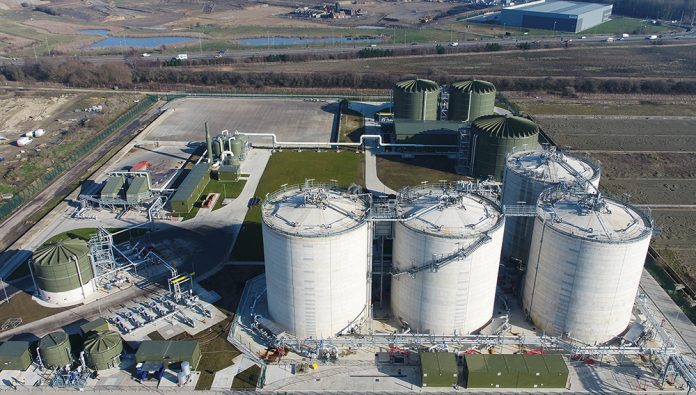Yorkshire Water’s £72m new anaerobic digestion plant at Knostrop Energy & Recycling Facility in Leeds has been officially opened in what is the latest step in the company’s commitment to invest in renewable energy and keep customers’ bills low.
The state-of-the-art facility is Yorkshire Water’s single biggest investment in the last five years and will significantly reduce the carbon footprint of the site.
The sludge is imported from across the Yorkshire Water region and treated in the county’s biggest digesters, which have the capacity to treat 131 tonnes per day.
Over a two-week period, the digesters convert the sludge into fertiliser which is used for agriculture and create a biogas that is turned into green electricity. The site will create enough electricity to run 55% of the site, the equivalent of powering 7,600 homes.
It is the latest step in the company’s ambition to be carbon neutral by 2030, with the firm reducing its carbon footprint by 80% over the past 10 years.
Yorkshire Water Director of Waste Water Delivery, Ben Roche, said: “Environment and keeping customer bills as low as possible are huge priorities for us at Yorkshire Water and are two of our five big goals.
“The Knostrop Energy & Recycling Facility shows our commitment to a more sustainable future and I am thrilled at the difference it will make. There is plenty more to come and we will continue to invest in innovation and look at ways we can reduce our carbon footprint to become carbon neutral by 2030.”
The site will recycle almost all of the sewage sludge in Leeds and also supports Leeds council’s ambition for the Lower Aire Valley to become a hub for green energy and industry.
Leeds Central MP, Hilary Benn and Leeds North MP, Alex Sobel were at the official opening alongside members of Leeds Council.
Hilary Benn said: “The opening of the new anaerobic digestion plant at Knostrop treatment works is a really important investment in our future. By recycling 94% of the sewage sludge in Leeds to create enough electricity to power over half of the treatment works’ energy needs, this scheme is helping to create a lower carbon future in the Lower Aire Valley.”



